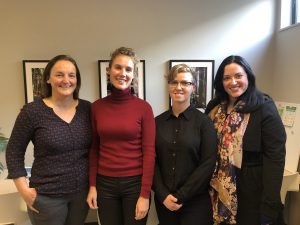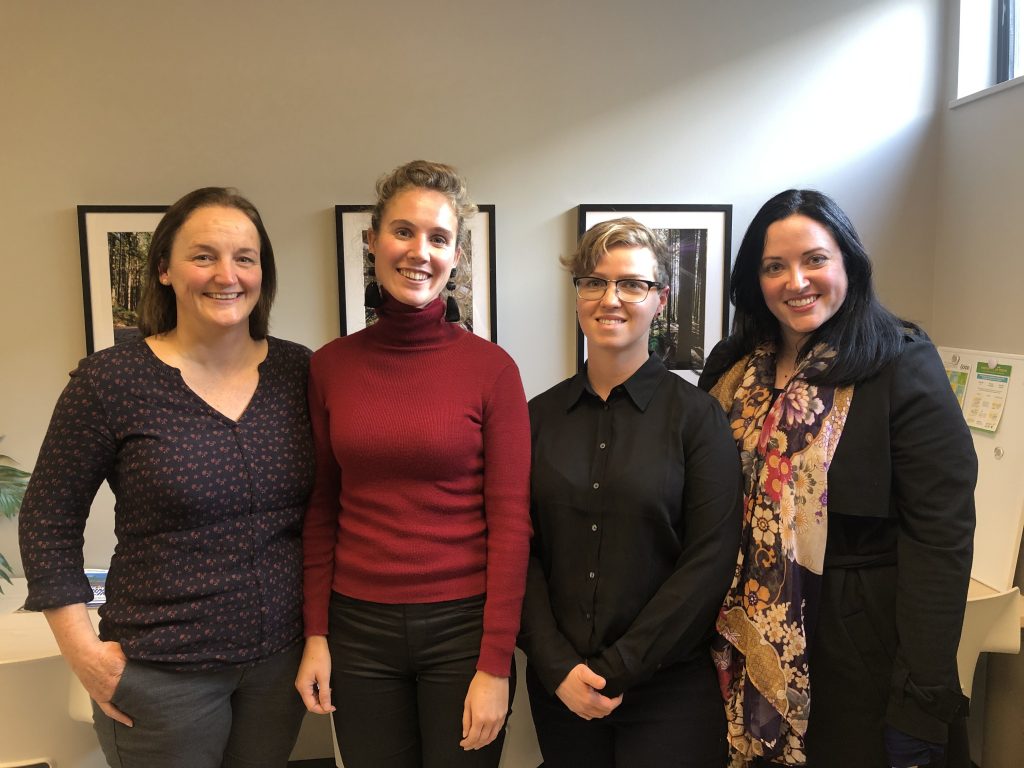
Dr. Caroline Sanders, Associate Professor and Coordinator of Graduate Programs in the School of Nursing at UNBC, has completed her first phase of research leading an international team which sought to address the needs of women with congenital adrenal hyperplasia (CAH). Drawing on existing literature and information available through hospital sites, her team began developing a list of key issues for women living with CAH, which was then expanded upon and validated by women living with the condition. These findings were used to create an infographic, website, and eventually a video funded by the Michael Smith Foundation for Health Research.
Her new research seeks to better understand experiences within the healthcare system from the perspectives of people living with Differences in Sex Development (DSD, or intersex variations), as well as healthcare providers. This project, funded by the Canadian Institutes of Health Research, has just begun, but the team is already thinking big about how digital health can play a part in reaching, learning from, and informing key stakeholders.
DEVELOPING DSDTransitions.ca
The process of creating a web-enabled tool for disseminating information has been filled with learning opportunities – beginning with how to decide what medium is most appropriate for a given project. When thinking digital dissemination, social media probably comes to mind. But, for a population that regularly faces discrimination, it wasn’t a natural fit.
“It is nice to have a non-Facebook platform for some people that want information but don’t want to be accessing it through something with their name on it,” explains Leigh Crawford, a Canadian policy analyst and UNBC Research Assistant. Websites are also more easily updated than traditional print materials, like informational booklets, adds Dr. Nina Callens, a collaborating Psychologist and researcher from Belgium.
Further to these issues, privacy and data security are increasingly common concerns.
“People are concerned about the security of their data. By developing a website, we can host [their data], we can own it,” explains Dr. Sanders. This also means that the website is not subject to commodification or commercialization, which could compromise patients’ consent, explains Dr. Tiffany Jones, an Australian collaborator and Associate Professor at Macquarie University.
Dr. Sanders and her team are collaborating with a company in Northern BC, called DUC Design, to design the site. Collaborating with a local development company has meant that they are able to work closely with the developers to iron out details that might not be at top of mind for those new to digital platforms, like domain names, site maintenance, copyright and ownership, and how to ensure that content is mobile-friendly and downloadable.
CONSIDERING THE LIMITATIONS
“[A] digital health platform is useful, but there [are] still areas we need to be really mindful of,” explains Dr. Sanders. “If you think about the Rural North, you know digital health won’t work great if they don’t have the internet.”
Further, the team explains how issues with access extend beyond geographic location. They describe how a patient in the Rural North might rely on a shared resource – for instance, a public library computer – to access a digital health tool. Dr. Sanders wonders whether people have been provided with the digital literacy required to know that they may want to delete their browser’s cookies, or other sensitive information that may have been logged on a public computer.
“We take for granted that we have our own [technology] and [that] no one else will be looking at our search history. If [people are] using communal spaces to access the internet and digital stories we need to think about that, too.”
THINKING BIG ABOUT DIGITAL OPPORTUNITIES
Beyond the scope of their current project, the team is thinking about other ways they can harness digital technologies to address patients’ needs. One area they’re particularly interested in relates to patients’ access to their own healthcare narrative. Women with DSD might not know their complete medical history and resulting healthcare needs.
“Which is complex,” Dr. Jones explains, “because our data so far is suggesting that very young people or parents — who are not yet sure how they feel about these conditions or variations — are becoming the knowledge holders and the knowledge providers to their future healthcare providers, without the knowledge of basic anatomical features they have or don’t have, or what surgeries were actually performed or not. There’s all sorts of astounding gaps in what is provided to them, and yet astounding expectations of what they’re supposed to be able to tell their next healthcare provider.”
“I’ve heard conversations with healthcare providers before about [how] ‘it’s [the patient’s] responsibility to come and teach me because [they] may be my only patient in my cohort that I know who has this condition,’” adds Dr. Sanders. “But, if we’ve not given people access to their health [records] then I don’t know how that’s even possible…I’ve met people who’ve said ‘I’ve gone [into] the healthcare profession with this condition because I wanted access to information I couldn’t get… so I can access [medical papers] in my education so that I can learn about me.’”
For many people, the experience of retelling past medical history can be a traumatizing experience. Dr. Sanders describes developing a way to share digital narratives about patients’ health in order to relieve patients and their families of that burden.
“I think about all the children that I’ve had the privilege of knowing, and their families all say ‘I get so fed up of giving you the same story’…Those people are telling and telling and telling [their story] because they may meet a new junior doctor, they may meet a specialist, they may meet a new nurse… Whoever they meet is new, and they have to recount it.”
Further, Drs. Sanders and Jones explain that for those with disabilities or with mental health concerns, the added pressure to recount the right details at the right time for each provider may not be possible. This type of work – though still just an idea they are grappling with – could have applications beyond the scope of DSD.
Whether considering their future research ideas, or their projects at hand, the team is driven by the needs of people living with DSD. They admit that an online presence has definitely opened them up to criticism and feedback from the community – but that they welcome it.
“We know [that with] this topic area there’s so much to learn, and we know there are so many contentious issues…so it’s also about accepting criticism and being prepared to take it humbly,” Leigh says. “You should expect criticism, because if [you don’t receive it], how are you learning?”
Dr. Sanders explains that this criticism might be upsetting, especially when you as a researcher are trying to come from a place of understanding and compassion. She suggests identifying supports you can turn to, as opening yourself up online can be a vulnerable process.
FINAL WORDS OF WISDOM
Ultimately, the team’s advice on undertaking a digital health project is to have fun and be creative. Other advice includes:
- Knowing who will take care of technical work, and for how long
- Always get a cost quote – and add 10-15% for unexpected costs
- Social media is inescapable. If you have capacity to extend your work to multiple platforms, consider engaging your audience there as well
- Understand your contracts, especially when it comes to data ownership, hosting, and what will happen if your hosting provider changes
- Companies you work with will likely have a grasp on things like copyright – but you may want to brush up, too
To learn more about the team and their research, get involved or share feedback please visit DSDTransitions.ca and CAHCanada.ca.
